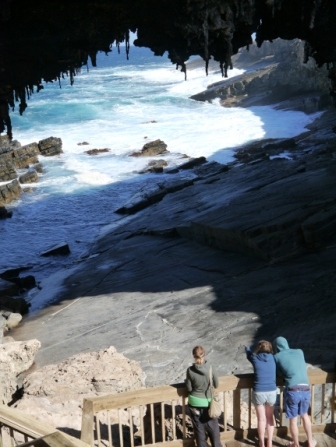Not long ago we posted our Top 10 things to do in Adelaide for (almost) nothing, Part 1. And now we’re back to finalise this little affair and make sure you all know how to get the most out of your limited budget while in Adelaide. So read in Part 2:
6. A CONCERT OR WHAT?
South Australia has been nicknamed ‘Australia’s Festival State’ , this is for one reason only – more than 400 festivals take place around the state every year. So whether you’re into sports, music, food and wine or comedy, there is something happening around you literally every day. Many of the events are free to attend (like the below pictured Orchestra Under the Stars concert in Elder Park) or you can always find a bargain ticket. The Adelaide Festival Centre offers great discounts and events for international students (for details on events coming up visit www.afct.org.au).
Also, there is a new arts access program for young people called the Fringe Benefits (www.fringebenefits.com.au). As a Fringe Benefits member you can enjoy exclusively discounted tickets to performing and visual arts events, major festivals, concerts and gigs all year round, plus special benefits at selected clubs, pubs and retail outlets.
7. HAIGH’S CHOCOLATE FACTORY
Whether you’re a true chocoholic or just like to nibble from time to time, Haigh’s Chocolate Factory is a paradise. Here you can enjoy special chocolate tastings, see chocolates being made and discover the heritage behind Haigh’s, Australia’s oldest chocolate manufacturer and a true Aussie icon, where chocolate is handmade. And let me tell you a little secret – when you book a factory tour (which is free and takes about 20 minutes) you’ll get a few delicious samples to taste. Now if free chocolate is not amazing then I don’t know what is :)!
8. BEACHED AS
You might have heard of this but the beaches in Australia are free:). There are plenty of beaches in Adelaide and most of them are less than 30 minutes from the city. And what’s more, Adelaide’s warm climate means you can enjoy them practically all year round. The most popular are the iconic Glenelg, Henley, Brighton and West beach, all with a vibrant pub culture and full of cafés, restaurants, little shops and miles of clean white sand.
9. WINDOW SHOPPING MATE
Rundle Mall is the shopping heart of Adelaide, located right in the city centre. It was created in 1976 as Australia’s first pedestrian mall. You’ll find more than 600 retail stores and 15 arcades there, outdoor cafes and bars to relax in. The Mall is renowned as a venue for performances, promotions and events, from fashion parades, to buskers and street performers (I don’t have to remind you that all these are free, right?).
10. BOTANIC GARDENS
Are you a flora fan? Interested in Australian native plants? Head down to Adelaide Botanic Gardens in eastern part of the city. On a sunny day, bring a picnic and snooze the afternoon away on one of their lush green lawns. We walked around the gardens and learned about the way the Aboriginal people used the plants for food, shelter and protection (read about us Discovering the Aboriginal Way here).
So, that’s our Top 10 awesome things to do in Adelaide for (almost) nothing. Have you found them helpful? Do you think we’ve left anything out? Share your thoughts below :).














































